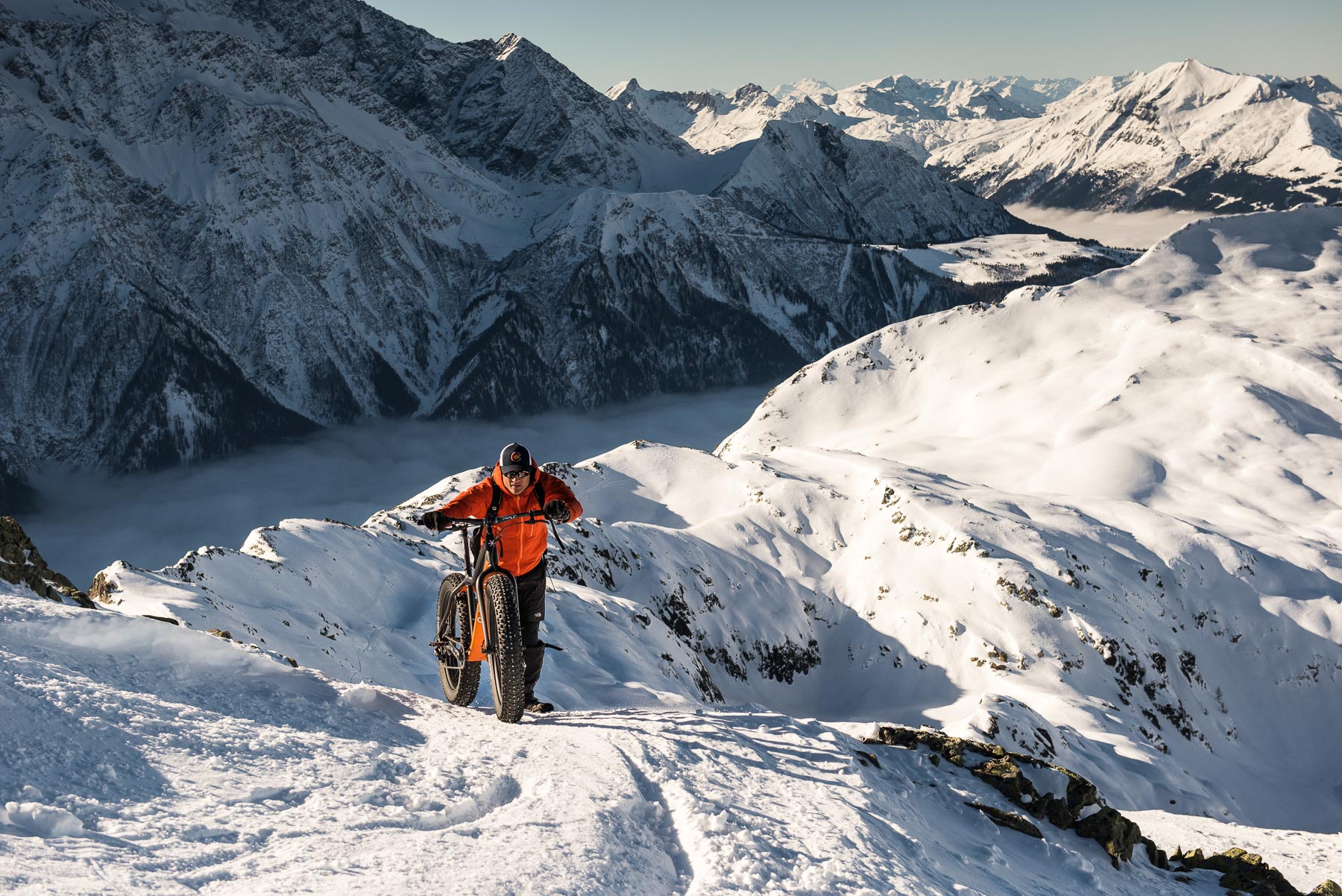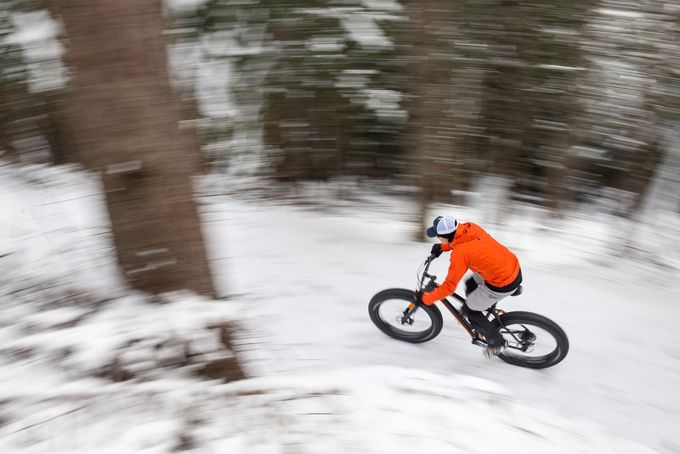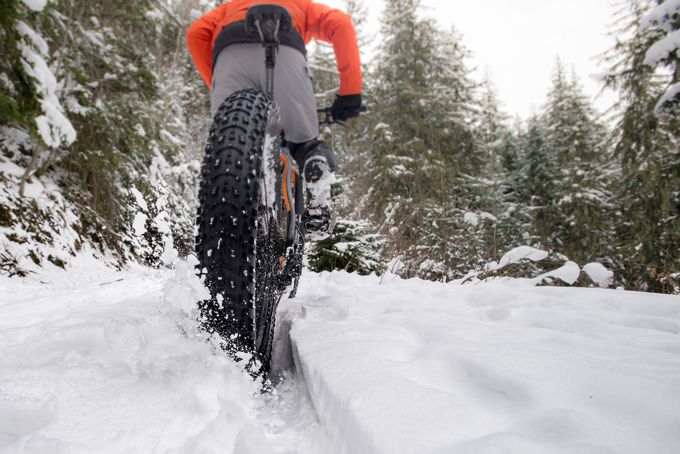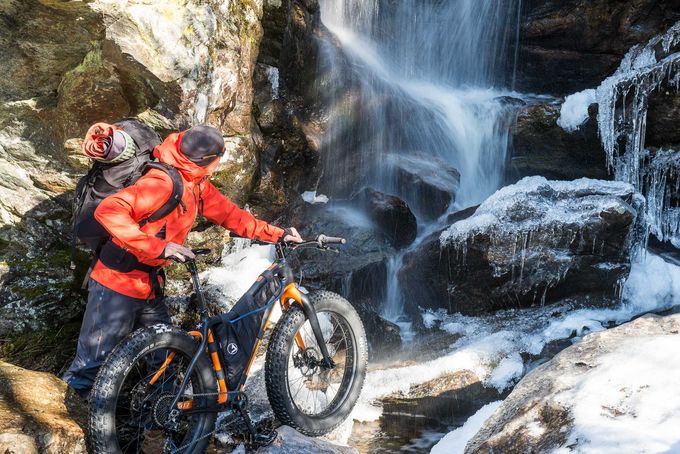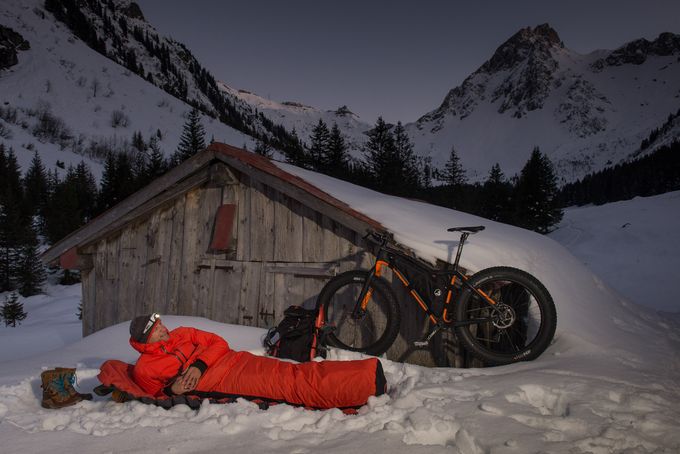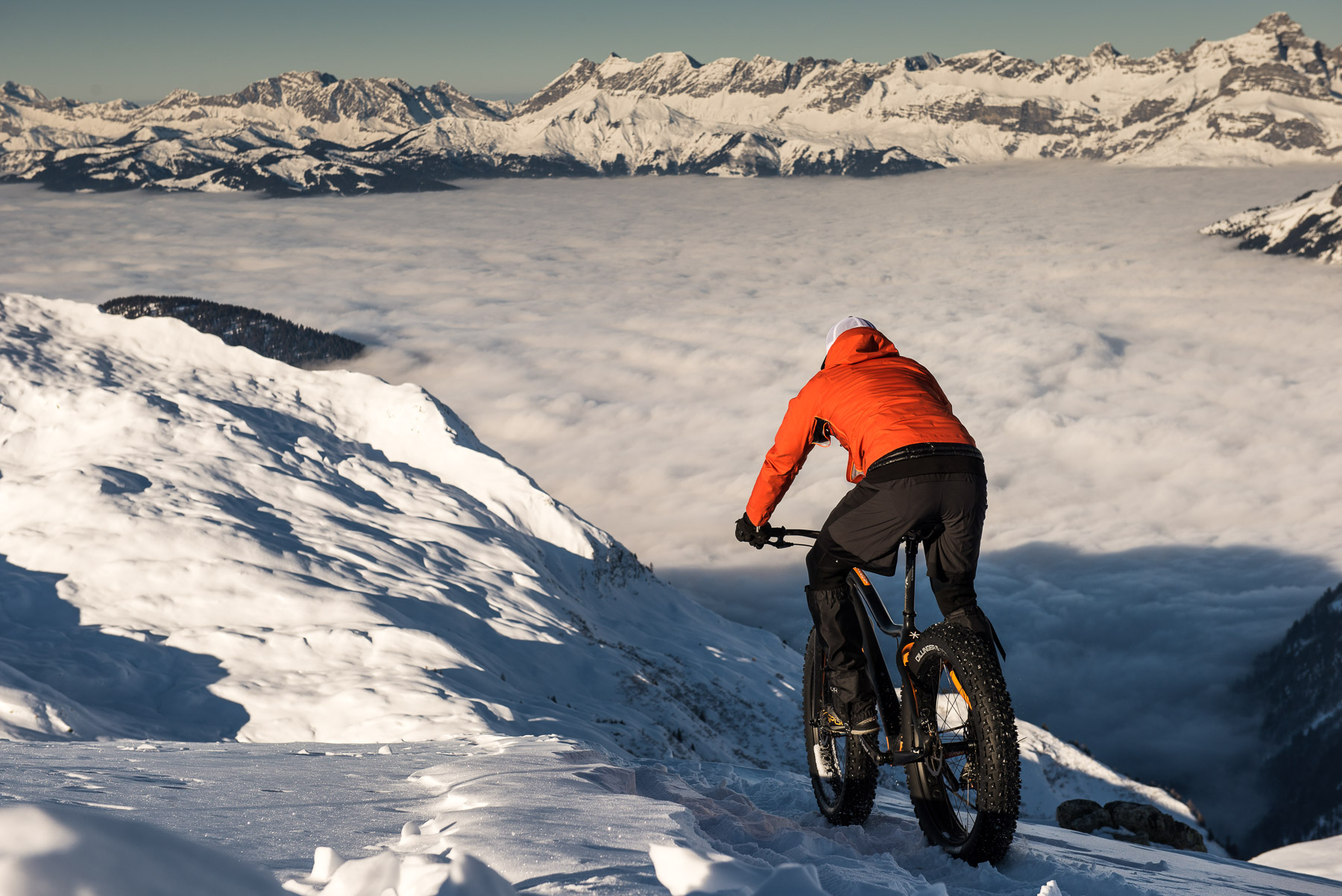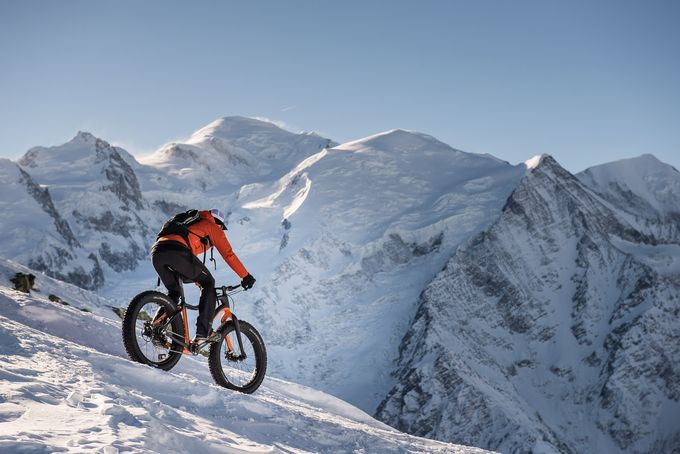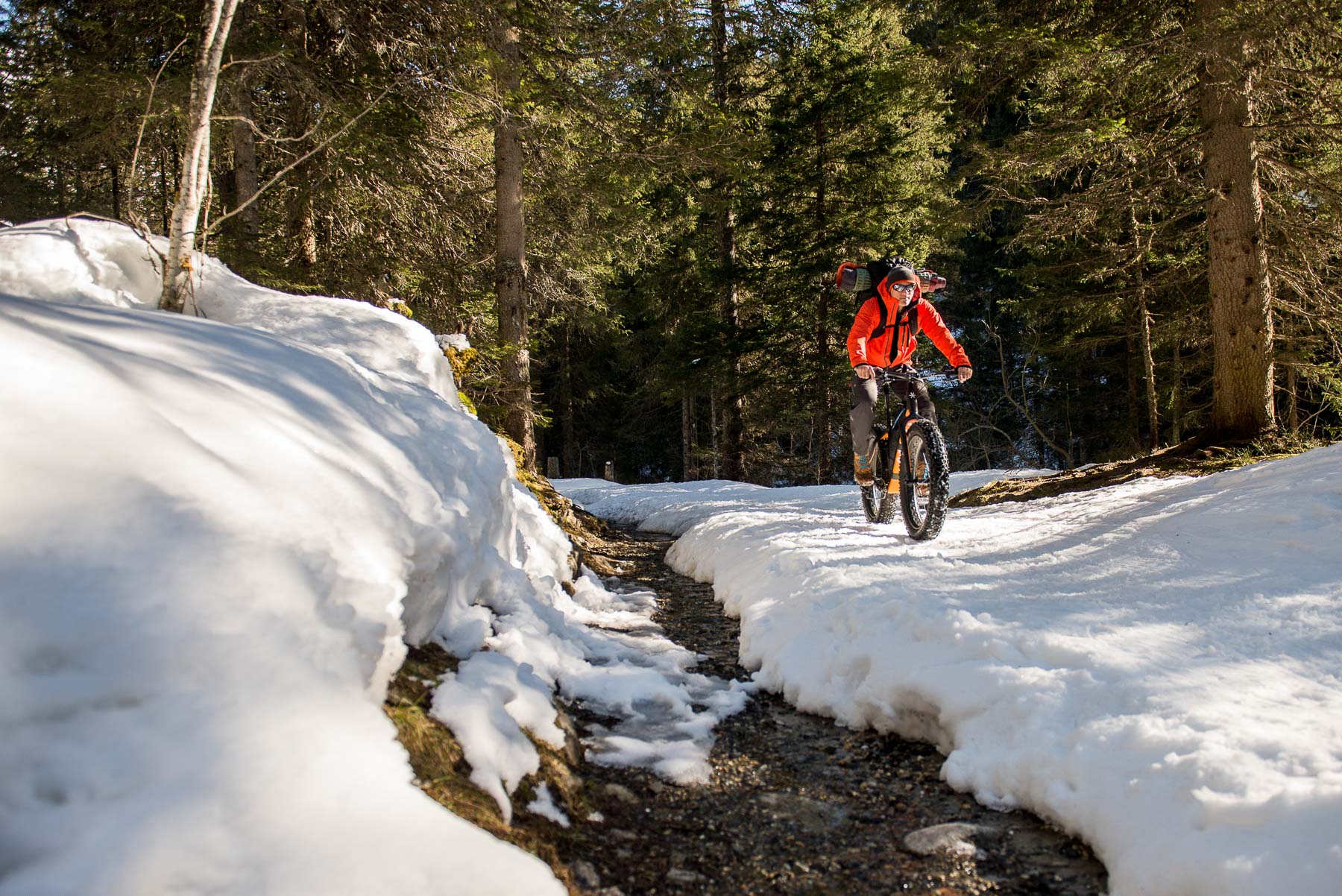Words and pictures by Daniel Wildey
The towns around the Mont Blanc massif are so densely populated with mountain athletes and extreme sports enthusiasts of all stripes that it’s difficult to imagine how anyone could come up with a new ‘world-first’ in the home of alpinism.
That is, until the arrival of fatbikes, and what one man believed could be a new approach to mountaineering.
Geoff Harper, a strength and conditioning coach from Surrey, has spent 16 years living in the US where the fatbike phenomenon is the fastest growing segment of an already-healthy cycling market.
“The first time I rode a Fatbike, I ploughed through fresh snow and it put a huge smile on my face.”
As a lifelong mountain biker, it was Harper’s move to Colorado that converted him to fatbiking. “The first time I saw one I thought it was comical” says Harper. “The first one I rode, I ploughed through fresh snow and it put a huge smile on my face.”
Fatbikes evolved around the Iditarod dogsled race in Alaska, an arduous endurance race across barren, snow-bound terrain. The early bikes were rudimentary, using two wheels and tyres welded side by side to provide more surface area for riding on snow; a far cry from Harper’s current whip – a ultralight 9:Zero:7 Carbon Whiteout.
The endurance element has always been part of fatbiking, but Harper wanted to remind people that they’re mountain bikes.
